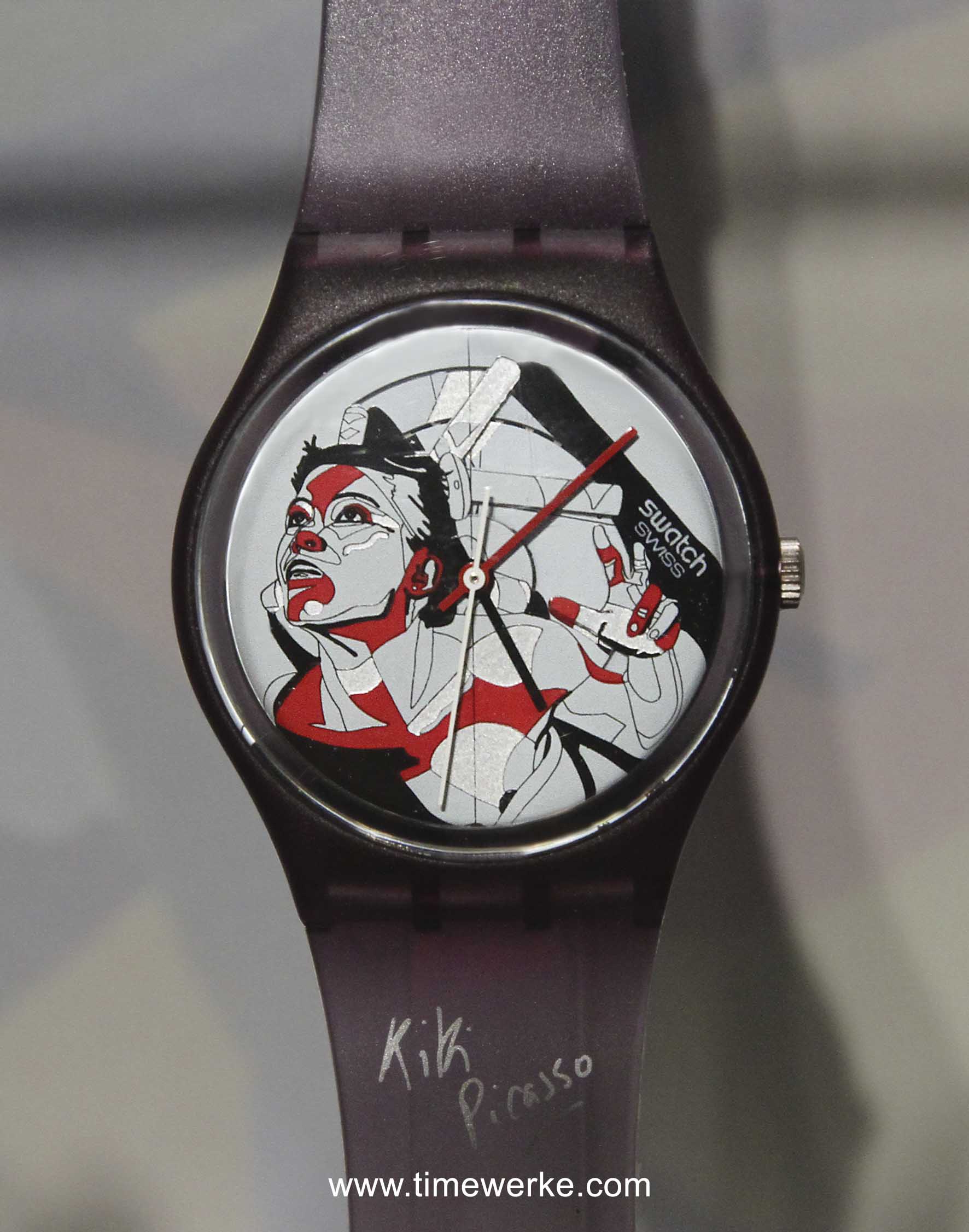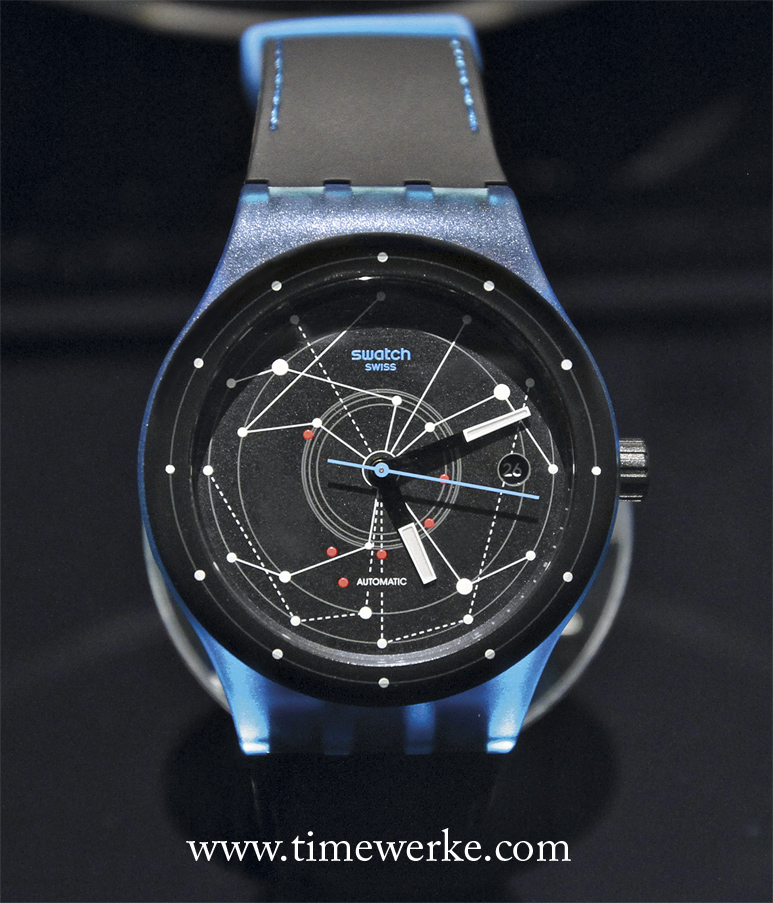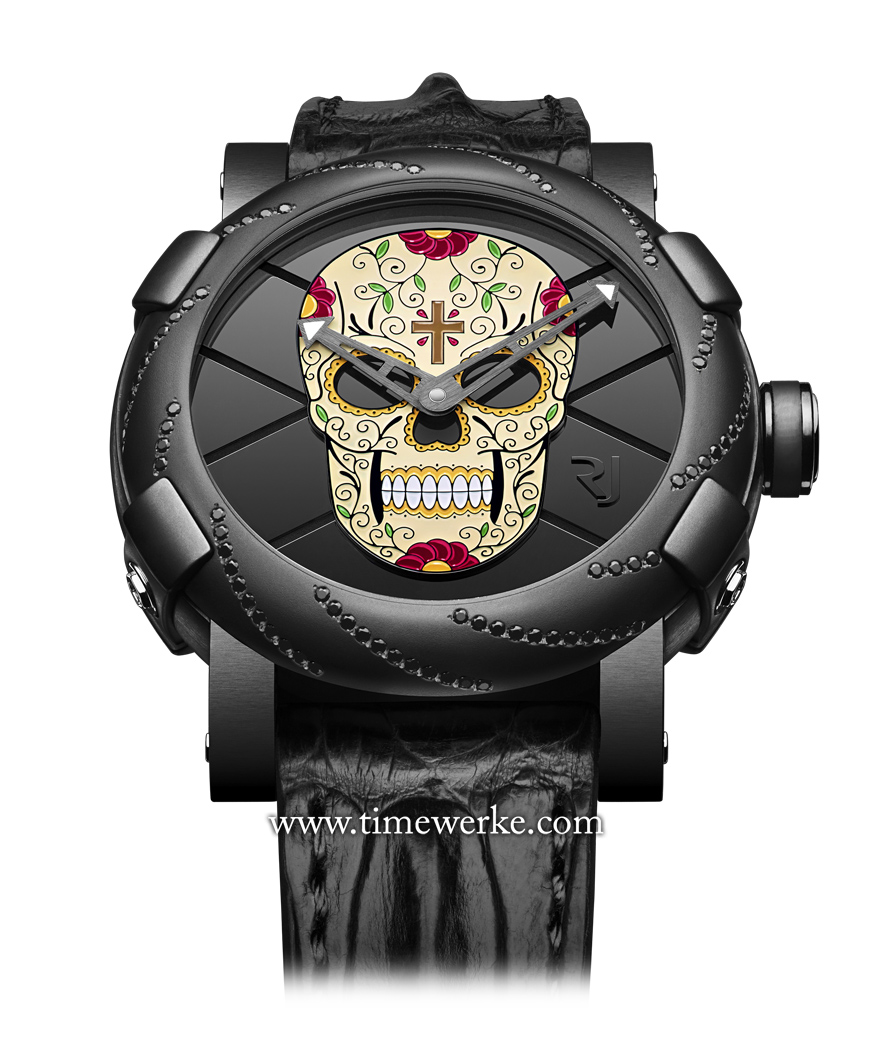
The extremely rare Swatch Kiki Picasso (Code: GZ008) which was launched in 1985 and limited to 140 pieces is the first Swatch Art Special. Photo: © TANG Portfolio, at BaselWorld 2013
When is a Picasso not truly a Picasso? When it is an art piece drawn by French artist Christian Chapiron. Well, sort of.
Chapiron, alias Kiki Picasso, goes down in Swatch watch history as the gentleman who helped launch “the love story of Swatch and art” in 1985 when the “Kiki” was launched.
That is because the “Kiki” watch is the first Swatch Art Special, an extremely rare collection as it was limited to 140 pieces with each dial in a different set of colours.
Since then, artists who have had their works featured on “the world’s smallest canvas” as what Swatch refers to its dials, have “helped art escape from galleries and museums to the wrists of millions around the world,” the brand cheekily states.

One of the first Swatch watches made in 1983 (Code: GB102). Photo: © TANG Portfolio, at BaselWorld 2013
This is what we learnt from the extensive and highly impressive Swatch exhibition held at the 2013 annual BaselWorld fair in Switzerland. This was an exhibition that was not to be missed as the brand showcased almost all the different models it has produced since its launch in March 1983. Even the very first models from 1983 were showcased.
What was also surprising was that this was the first time Swatch was officially present at BaselWorld and it is a befitting welcome especially since 2013 marks the 30th anniversary of the birth of Swatch.
How many million Swatch watches have been produced since 1983? Well, by 2006, the 333 millionth Swatch had already been produced. Going by such a rate, today’s count will easily surpass more than 400 million Swatch watches produced.
One must not forget that it is also because of the success of Swatch and the contributions from the late Nicolas Hayek Senior (1928 to 2010) that we are able to have and continue to enjoy brands such as Breguet, Blancpain, Glashütte Original, Jaquet Droz, Omega, Longines, Rado, Tissot and Hamilton.
This was a key point aptly brought up by Charles Blétry, regional brand manager, Swatch Group S.E.A., and discussed in a lively manner as he explained the history of Swatch through its comprehensive displays in the exhibition hall.
We fully agree and sincerely thank Swatch for showcasing such a phenomenal range of their offerings since 1983 at this fair alone. This was undoubtedly one of the best and most comprehensive exhibitions we had experienced.
Of course, what is an anniversary year without a celebratory statement piece? This is the very reason for the creation of the amazing Swatch Sistem51 which celebrates the brand’s credo: simplify and innovate.

The Swatch Sistem51, launched in 2013, is the world’s first mechanical movement fully assembled automatically. It features an automatic movement with 90 hours of power reserve and is Swiss-made. Photo: © TANG Portfolio, at BaselWorld 2013
Made of 51 parts, the same number of components used by Swatch for its quartz watches in 1983, the brand lays its claim with the Sistem51 being the world’s only mechanical watch where its assembly is 100% automated.
What’s more, the automatic movement of the Sistem51 has 90 hours of power reserve while not forgetting that it is 100% Swiss-made.
This is a must-have for die-hard Swatch fans. It is also worth serious consideration for those wishing to have a historically-significant mechanical watch from Swatch.
Another Swatch article on timewerke.com that may be of interest: Swatch Sistem51: The story of reality

